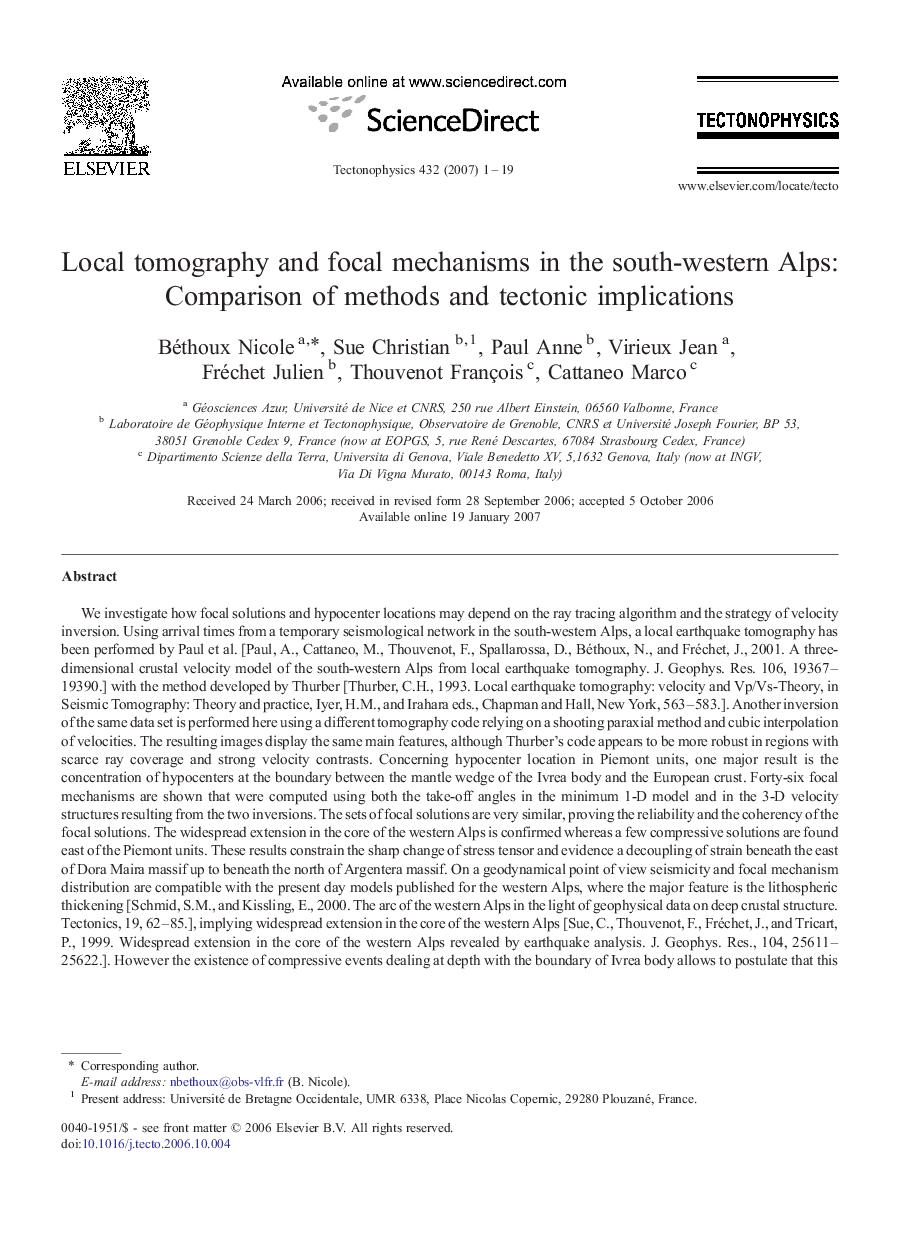| کد مقاله | کد نشریه | سال انتشار | مقاله انگلیسی | نسخه تمام متن |
|---|---|---|---|---|
| 4694827 | 1636937 | 2007 | 19 صفحه PDF | دانلود رایگان |

We investigate how focal solutions and hypocenter locations may depend on the ray tracing algorithm and the strategy of velocity inversion. Using arrival times from a temporary seismological network in the south-western Alps, a local earthquake tomography has been performed by Paul et al. [Paul, A., Cattaneo, M., Thouvenot, F., Spallarossa, D., Béthoux, N., and Fréchet, J., 2001. A three-dimensional crustal velocity model of the south-western Alps from local earthquake tomography. J. Geophys. Res. 106, 19367–19390.] with the method developed by Thurber [Thurber, C.H., 1993. Local earthquake tomography: velocity and Vp/Vs-Theory, in Seismic Tomography: Theory and practice, Iyer, H.M., and Irahara eds., Chapman and Hall, New York, 563–583.]. Another inversion of the same data set is performed here using a different tomography code relying on a shooting paraxial method and cubic interpolation of velocities. The resulting images display the same main features, although Thurber's code appears to be more robust in regions with scarce ray coverage and strong velocity contrasts. Concerning hypocenter location in Piemont units, one major result is the concentration of hypocenters at the boundary between the mantle wedge of the Ivrea body and the European crust. Forty-six focal mechanisms are shown that were computed using both the take-off angles in the minimum 1-D model and in the 3-D velocity structures resulting from the two inversions. The sets of focal solutions are very similar, proving the reliability and the coherency of the focal solutions. The widespread extension in the core of the western Alps is confirmed whereas a few compressive solutions are found east of the Piemont units. These results constrain the sharp change of stress tensor and evidence a decoupling of strain beneath the east of Dora Maira massif up to beneath the north of Argentera massif. On a geodynamical point of view seismicity and focal mechanism distribution are compatible with the present day models published for the western Alps, where the major feature is the lithospheric thickening [Schmid, S.M., and Kissling, E., 2000. The arc of the western Alps in the light of geophysical data on deep crustal structure. Tectonics, 19, 62–85.], implying widespread extension in the core of the western Alps [Sue, C., Thouvenot, F., Fréchet, J., and Tricart, P., 1999. Widespread extension in the core of the western Alps revealed by earthquake analysis. J. Geophys. Res., 104, 25611–25622.]. However the existence of compressive events dealing at depth with the boundary of Ivrea body allows to postulate that this geological structure is still tectonically active. Even if field work has not shown this so far, the Insubric line appears to extend toward the south at depth, as a blind fault, and to play a key role in the dynamics of the south-western Alps.
Journal: Tectonophysics - Volume 432, Issues 1–4, 5 March 2007, Pages 1–19